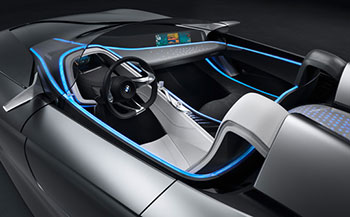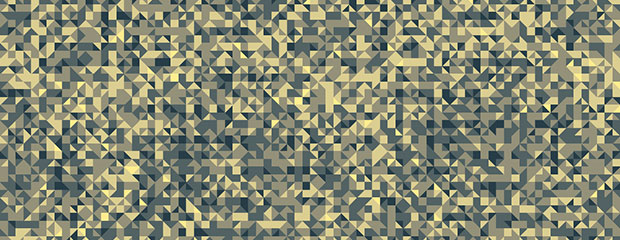"APIs for the Physical World" entries

Signals from the O’Reilly 2015 Solid Conference
Insight and analysis on the Internet of Things and the new hardware movement.
Practitioners, entrepreneurs, academics, and analysts came together in San Francisco this week to discuss the Internet of Things and the new hardware movement at the O’Reilly 2015 Solid Conference. Below we’ve assembled notable keynotes and interviews from the event.
Lock in, lock out: DRM in the real world
Author and activist Cory Doctorow uses his Solid keynote to passionately explain how computers are already entwined in our lives and our bodies, which means laws that support lock-in are much more than inconveniences. Doctorow also discusses Apollo 1201, a project from the Electronic Frontier Foundation that aims to eradicate digital rights management (DRM).

The smartest way to program smart things: Node.js
The reasons to use Node.js for hardware are simple: it’s standardized, event driven, and has very high productivity.
Node.js is on the rise for programming hardware. The full Google V8 version helps run Intel’s Edison chip. The IoT community has already embraced Node.js for embedded devices and robotics, with notable examples including Nodebots and Cylon. And now, even smaller devices like Tessel 2 — a development platform for prototyping hardware — are using JavaScript.
Why is this a big deal? It makes programming hardware much simpler — college students can learn Node.js in a weekend. And it makes it possible to build and program an entire IoT device, from start to finish, in less than four hours. This may very well be the future of hardware programming.
Intel principal engineer Michael McCool will be at O’Reilly’s Solid Conference, June 23-25, 2015, to lead a workshop on using Node.js and HTML5 to program the Internet of Things. “In only three and a half hours, we’re going to walk people through building a complete and sophisticated IoT system,” McCool told me in an interview. That includes building a hardware prototype, hardware interfacing, streaming telemetry, building a UI on the phone, and creating an app. “The Web server part is just five lines of code. The rest of it is similarly simple,” he said. “The complete code is only about 200 lines on the embedded device, plus a little bit more…when you add in graphs of things for streaming data.” Read more…

Mining the value of the IoT
Michael Chui on the hidden value locked within the Internet of Things.

Jon Bruner and Dr. Michael Chui recently discussed Chui’s latest research on the Internet of Things as part of our IoT Profiles Series. A full recording of their conversation is embedded at the end of this post—and it’s well worth watching—but here’s a look at a few key points that were made. Chui will expand on these ideas and debut his new report during his session, “Beyond the hype; Mining the value of the IoT,” at the upcoming O’Reilly Solid Conference (June 23-25 in San Francisco).
Comparing B2B and consumer applications
A lot of the hype surrounding the IoT is centered around consumer products, and while Chui sees tremendous value in the consumer arena, the business-to-business (B2B) market holds particular promise. “There’s double the amount of value in B2B applications as there are in consumer applications,” he says. The value, he says, “is in logistics and manufacturing and many of those applications.”
Even in consumer applications, he adds, B2B2C (business-to-business-to-consumer) applications can multiply value. ”When, in fact, the consumer health care health monitor can be connected to my provider, to my doctor, and have that continuous stream of health data actually connect up to the professional health care system, that’s where we think a lot of value can be created.” [Discussed at the 5:08 mark.] Read more…

Beacosystem evolution, hurdles, and resources
A look at the issues and trends in deploying beacon-based solutions.
In this post, the third of our series, I’ll look at some of the issues in using and deploying beacon-based solutions, some of the trends in both hardware and software offerings, and share some resources where you can find more detail on everything I’ve covered so far.
First off, let’s take a look at some of the topics that can cause issues, or trip us up when starting to consider a new iBeacon-based solution. In no particular order, these include:
Notifications, Notifications, Notifications
I have many conversations with potential clients that go something like this (in condensed form):
Client: “We want to do a beacon project”
Me: “Great, what are you thinking of?”
Client: “We want to trigger messages to people as they come past or in to our place on their phones”
Me: “OK, is this iOS only?”
Client: “No – of course not – in fact, most of our users are on Android”
Me: “Ah – ok… well…”
(long conversation follows)
With the initial hype and excitement around iBeacon, it’s understandable that there’s some confusion around what’s possible, and what’s not, across all the mobile handsets available today. For now, I’ll focus on just iOS and Android, though we could usefully expand to include Windows and Blackberry. Read more…

Why the Internet of Things isn’t the same as the new hardware movement
Cheap, accessible, open hardware is driving the IoT.
![]()
The Internet of Things (IoT) has been committing a lot of buzzword imperialism lately. It’s a hot term, marching across the technological countryside and looking for rich disciplines to capture. Electronics, manufacturing, and robotics, among others, have all become dominions of the IoT. The result is that the meaning of IoT has broadened to include practically anything that involves 1. technology, and 2. something physical.
At the same time, practitioners have been trying to escape the IoT — and its early association with Internet-connected refrigerators — for years. Big enterprises that want to develop serious applications for the Internet of Things have come up with other terms for what they’re doing, like Internet of Everything (Cisco) and Industrial Internet (GE).
Let’s put a stop to this and define some boundaries. In my view, the Internet of Things is the result of a much larger and more important movement that’s about making the physical environment accessible in the same way that the Internet has become accessible over the last 20 years. I’ll call this the “new hardware movement.” Read more…

What today’s fitness technology means for tomorrow’s office
How the IoT could help organizations create a better employee experience.
Contributing Author: Claire Niech
Attend O’Reilly’s Solid Conference, June 23–25, in San Francisco. Solid is our conference exploring how the collision of software and hardware is fueling the creation of a software-enhanced, networked physical world.
At 5:37 a.m., Nina’s alarm softly begins to buzz and glow. It has calculated her recovery time based on her previous day’s workout and monitored her sleep tracker to identify the best point in her REM cycle to wake her up. After rising, she grabs a healthy breakfast and her PrepPad or Drop connected kitchen scale records the fat, protein, calories, and carbohydrates in her meal.
For athletes like Nina, this kind of technology-enabled tracking is now standard. When Nina hits the gym for her daily routine, she warms up on a treadmill equipped with sensors to help gauge when she is striking at her optimal force. As she practices technique and form, a ‘smart’ surface records the location and duration of each move. Her training regimen is personalized based on this data; ‘instead of working off a generalized idea of what an athlete needs to be successful, [data analysis] has identified the specific abilities that a player requires to excel in a given sport.’ (From Faster, Higher, Stronger, by Mark McClusky)
Professional athletes today increasingly rely on Internet-connected devices and sensors to boost performance. Yet, the potential of such devices — commonly called the “Internet of Things” — extends beyond sports and fitness; as “weekend warriors” begin to bring these technologies mainstream, it is not hard to imagine that similar devices may soon also help us better understand other complex personal pursuits, such as creativity and productivity at work. As Laszlo Bock, who runs Google’s People Operations, notes: “We all have our opinions and case studies, but there is precious little scientific certainty around how to build great work environments, cultivate high-performing teams, maximize productivity, or enhance happiness.”
Today, many organizations tackle these questions with an industrial-organizational approach, diagnosing the issues most relevant to their workforce using tools such as annual surveys and benchmarking. But today’s approach seldom offers insight on “what works” — ways to track, teach, or reinforce new behaviors, or to see if specific initiatives are achieving the desired effect. Solutions to complex challenges like productivity or satisfaction often vary by organization, and demand better, real-time measurement and testing to enable experimentation.
By weaving together our physical and digital environments, sensors could help organizations analyze how factors like mood, focus, social engagement, or movement contribute to the employee experience — and even help replicate or enhance this experience. Consider how this new technology could impact how companies do work, assess outcomes, and enable employees to thrive. Read more…

Google’s Physical Web vs Apple’s iBeacon
How proximity approaches compare and a look at the flourishing proximity startup ecosystem.
Editor’s note: This is the second post in a series looking at beacon technology and the burgeoning beacon ecosystem.
In the first of this series, I covered some of the basics behind proximity, Bluetooth Low Energy, and iBeacon, and walked through some use cases where proximity and iBeacon have started showing up in retail, travel, and other applications.
While iBeacon has arguably galvanised the notion of using proximity in applications and services, it’s not the only game in town.
In this post, I’ll cover one of the alternatives to Apple’s iBeacon, Physical Web from Google, and then I’ll zoom out to look at the flurry of activity in startups in the evolving “Beacosystem.”
First, a small recap on what helped iBeacon gain so much traction, so quickly and helped shape the landscape for a proximity ecosystem to emerge.
Creating an ecosystem
Apple’s iBeacon is a layer, or a “convention,” that builds on the Bluetooth Low Energy (BLE) Standard. Apple has spurred an ecosystem around iBeacon by doing several things, which all feed into each other:
- Baked support for iBeacon into its mobile operating system (iOS) so that APIs are readily available for developers.
- Included support for background notifications at the OS level, so that push notifications can be triggered in certain situations, but without killing your phone’s battery.
- Provided a certification program to enable hardware manufacturers to create iBeacon-compatible hardware. This allows third-party manufacturers to provide iBeacon-compatible hardware of all shapes, sizes, and form factors, At last count, there were more than 50 suppliers of iBeacon hardware.
- Enabled every iOS device to be an iBeacon. This has many potential uses, from iPad-based POS systems welcoming you to a store, to the Hailo App letting you know that you can pay by Hailo.
- Ate its own dog food, by using iBeacon with their Apple Store App in all their US based Apple Stores.

The challenge of connecting anything to the Internet
The O'Reilly Solid Podcast: Zach Supalla and Will Hart on building a supply chain, making radios work, and taking on big telecom.
Subscribe to the O’Reilly Solid podcast to stay on top of topics related to the Internet of Things, hardware, software, manufacturing, and the blurring of the physical and virtual worlds.
A few weeks ago, hours after launching a blow-out Kickstarter campaign, Zach Supalla and Will Hart of Spark Labs dropped by our podcasting studio to have a wide-ranging conversation about how they’d built a successful hardware startup, how they manage their overseas supply chain, and how they’re taking on established machine-to-machine and telecom companies by turning themselves into a mobile virtual network operator (MVNO).
Zach and Will are leading a workshop at our Solid Conference called “How to manage China” on how to build and maintain a supply chain.
Spark’s latest product, the Electron, is a tiny development kit that can connect just about any kind of device to Spark’s back-end platform over a 3G cellular signal for as little as $3 per month. Read more…

A new dawn of car tech: customization through software, not hardware
Three ways entrepreneurs can bring the rate of progress we’ve seen in computing and communication to car tech.

BMW’s Vision ConnectedDrive concept car. Image: BMW.
Skeptics will cite the arduous three-to-six-year automotive design cycles, onerous qualification requirements, and thin margins that plague the automotive value chain. By attracting the greatest engineers and entrepreneurs, the car business of the early 20th century took us from horseback to stylish coupes within a generation, soon to be followed by tire-smoking muscle cars. Cars built during and after the late 80s pollute less over their lifetimes than their predecessors did parked. Sound like Moore’s Law to you? Read more…

What are iBeacons?
How to get started with proximity sensors.
Editor’s note: This is the first post in a series looking at beacon technology and the burgeoning beacon ecosystem.
Apple galvanized the whole area of proximity-enabled applications and services when it launched iBeacon at WWDC in June 2013. When iOS7 launched later that year, it was the first time support for a variety of proximity use cases was both designed in — and available at scale in — a mobile platform.
Since then, hundreds of companies have become involved in different ways in the iBeacon ecosystem — what I call the “Beacosystem.” These companies are making beacon hardware, offering proximity/iBeacon software platforms, creating shopper marketing platforms, using beacons to deliver signals for location analytics and mobile marketing solutions, powering indoor location services, and more.
This post introduces proximity and iBeacon, covers some background on how it works, and explains why there is some excitement and hype around the uses of proximity in various verticals, including retail.



